Prohibition Party
Prohibition Party | |
|---|---|
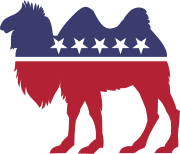 | |
| Chairman | Zack Kusnir |
| Founded | September 1, 1869 |
| Ideology | Temperance[1] Christian democracy Social conservatism |
| Political position | Syncretic Social: Center-right Fiscal: Center-left |
| Colors | Red, white and blue (national colors) |
| Seats in the Senate | 0 / 100 |
| Seats in the House | 0 / 435 |
| Governorships | 0 / 50 |
| State Upper Houses | 0 / 1,921 |
| State Lower Houses | 0 / 5,411 |
| Website | |
| www | |
The Prohibition Party is a political party in the United States known for its historic opposition to the sale or consumption of alcoholic beverages and as an integral part of the temperance movement. It is the oldest existing third party in the United States and the third-longest active party.
Although it was never one of the leading parties in the United States, it was once an important force in the Third Party System during the late 19th and early 20th centuries. The organization declined following the enactment of Prohibition in the United States but saw a rise in vote totals following the repeal of the Eighteenth Amendment in 1933. However, following World War II it declined, with 1948 being the last time its presidential candidate received over 100,000 votes and 1976 being the last time the party received over 10,000 votes.
The party's platform has changed over its existence. Its platforms throughout the 19th century supported progressive and populist positions including women's suffrage, equal racial and gender rights, bimetallism, equal pay, and an income tax.[2] The platform of the party today is more progressive on economic issues in that it supports Social Security and free education, but is conservative on social issues, such as supporting temperance and reforming immigration rules, thus making it communitarian.[1][3]
History
[edit]
Foundation
[edit]In 1868 and 1869, branches of the International Organisation of Good Templars, a global temperance organization, passed resolutions supporting the creation of a political party in favor of alcoholic prohibition. From July 29 to July 30, 1868, the sixth National Temperance Convention was held in Cleveland, Ohio, and passed a resolution supporting temperance advocates to enter politics. On May 25, 1869, the Good Templars branch in Oswego, New York, called a meeting to prepare for the creation of a political party in favor of prohibition. Jonathan H. Orne was chosen as chairman and Julius A. Spencer as secretary of the meeting and a committee consisting of John Russell, Daniel Wilkins, Julius A. Spencer, John N. Stearns, and James Black was created to organize a national party.[4]
On September 1, 1869, almost five hundred delegates from twenty states and Washington, D.C., met at Farwell Hall in Chicago and John Russell was selected to serve as the temporary chairman and James Black as president of the convention.[5] The party was the first to accept women as members and gave those who attended full delegate rights.[6][7] Former anti-slavery activist Gerrit Smith, who had served in the House of Representatives from 1853 to 1854 and had run for president in 1848, 1856, and 1860 with the Liberty Party nomination, served as a delegate from New York and gave a speech at the convention. The organization was referred to as either the National Prohibition Party or the Prohibition Reform Party.[8][9]
Early
[edit]On December 9, 1871, a national convention was called for February 22, 1872, to nominate a presidential and vice presidential candidate.[10] Chairman Simeon B. Chase, U.S. Chief Justice Salmon P. Chase, Gerrit Smith, Mayor Neal Dow (a former mayor of Portland, Maine), and John Russell were proposed as presidential nominees while Henry Fish, James Black, John Blackman, Secretary Gideon T. Stewart, Julius A. Spencer, and Stephen B. Ransom were proposed for the vice presidential nomination.[11] Black and Russell were given the presidential and vice presidential nominations. The first platform of the organization included support for alcoholic prohibition, the direct election of Senators, bimetallic currency (based on silver as well as gold), low tariffs, universal suffrage for both men and women of all races, and increased foreign immigration.[12][13][14]
In 1876, the organization's name was changed to the National Prohibition Reform Party. However, in 1881, Frances Willard, R. W. Nelson, A. J. Jutkins, and George W. Bain formed the Home Protection Party, which was more pro-women's suffrage than the Prohibition Party, but later rejoined the party at the 1882 convention and the organization was renamed to the Prohibition Home Protection Party. However, at the 1884 national convention the organization was renamed to the National Prohibition Party.[15][16]
Rise
[edit]
In 1879, Frances Willard became the president of the Woman's Christian Temperance Union and although it had remained non-partisan in the 1876 and 1880 presidential elections, Willard advocated for a resolution under which the organization would pledge its support to whichever party would support alcoholic prohibition. Willard's attempts in 1882 and 1883 were unsuccessful, but she was successful in 1884 after her opponents left to join Judith Foster's rival Non-Partisan WCTU.[17] During the 1884 presidential election the organization sent its resolution to the Republican, Democratic, Greenback, and Prohibition parties and only the Prohibition Party accepted. At the Woman's Christian Temperance Union's 1884 national convention in St. Louis the organization voted 195 to 48 in favor of supporting the Prohibition Party and would continue to support the Prohibition Party until Willard's death in 1898.[18]
During the 1884 election, the party nominated John St. John, the former Republican governor of Kansas, who, with the support from Willard and the WTCU, saw the party poll 147,482 votes for 1.50% of the popular vote. However, the party was accused of spoiling the election due to Grover Cleveland's margin of victory over James G. Blaine in New York being less than John's vote total there.[19] In 1888, the party's presidential nominee, Clinton B. Fisk, was accused of being a possible spoiler candidate that would prevent Benjamin Harrison from winning, but Harrison won the election even though he lost the national popular vote.[20]
From January to February 1892, Willard met with representatives from the Farmers' Alliance, People's Party, National Reform Party, and the remainder of the Greenback Party in Chicago and St. Louis in an attempt to create a fusion presidential ticket, but the organizations were unable to agree to a platform.[21][22] The People's Party would later fuse with the Democratic Party in the 1896 presidential election.
The party suffered a schism at the 1896 Prohibition convention between the "narrow gauger" faction which supported having only an alcoholic prohibition plank in the party's platform and the "broad gauger" faction which supported the addition of free silver and women's suffrage planks. After the narrow gaugers successfully chose the presidential ticket and the party platform, the broad gaugers, led by former presidential nominee John St. John, Nebraska state chairman Charles Eugene Bentley, and suffragette Helen M. Gougar, walked out and created the breakaway National Party, nominating a rival ticket with Bentley as president and James H. Southgate as vice president.[23] The Prohibition party ticket of Joshua Levering and Hale Johnson had the worst popular vote performance since Neal Dow's 10,364 votes in 1880, but still outperformed the National Party's 13,968 votes. Following the 1896 election most of the members of the National Party became disillusioned with that party and returned to the Prohibition Party, but those who remained reformed into the Union Reform Party and supported Seth H. Ellis and Samuel Nicholson during the 1900 presidential election,[24] while the official Prohibition Party ticket of John G. Woolley and Henry B. Metcalf took 1.5% and third place in the national popular vote.
At the same time, the Prohibition Party's ideology broadened to include aspects of progressivism. The party contributed to the third-party discussions of the 1910s and sent Charles H. Randall to the 64th, 65th, and 66th Congresses (1915–21) as the representative of California's 9th congressional district; on April 6, 1917, Randall was one of 50 representatives who voted against U.S. entry into World War I.[25] Democrat Sidney J. Catts of Florida, after losing a close Democratic primary, used the Prohibition line to win election as Governor of Florida in 1916; he remained a Democrat.
During the 1916 presidential election, the party attempted to give its presidential nomination to former Democratic presidential candidate William Jennings Bryan, but he declined the offer via telegram.[26][27] At the national convention the presidential nomination was given to former Indiana Governor Frank Hanly, but an attempt to make his nomination unanimous was defeated by Eugene W. Chafin, who had served as the presidential nominee in 1908 and 1912, and had supported giving the nomination to former New York Governor William Sulzer.[28] Virgil G. Hinshaw wrote to John M. Parker in an attempt to fuse the Prohibition and Progressive parties, but it failed; the Progressives did not nominate a presidential candidate and later disbanded.[29]
On February 4, 1918, the Prohibition affiliate in California voted in favor of merging with the National Party, which was created by pro-war defectors from the Socialist Party of America in 1917.[30]

Decline
[edit]On January 16, 1919, the Eighteenth Amendment, which prohibited "intoxicating liquors" in the United States, was ratified by the requisite number of states. Although it was suggested that the organization should be disbanded due to national alcoholic prohibition being achieved, the committee leaders changed the focus of the organization to support the enforcement of prohibition. In 1921, the organization petitioned for any non-citizens who violated the Eighteenth Amendment to be deported and for citizen violators to lose their right to vote. At the 1924 national convention the party approved a platform with only two planks, namely, supporting religion in public schools and the assimilation of immigrants.[31]
During the 1928 presidential election, some members of the party, including Chairman D. Leigh Colvin and former presidential nominee Herman P. Faris, considered endorsing Republican Herbert Hoover rather than running a Prohibition candidate and risk allowing Al Smith, who supported ending prohibition, to be elected. However, the party chose to nominate William F. Varney due to its feeling that Hoover was not strict enough on prohibition, although the affiliate in California gave Hoover an additional ballot line and in Pennsylvania the affiliate did not file presidential electors.[32][33][34] However, the party became critical of Hoover after his victory, and during the 1932 presidential election D. Leigh Colvin stated that "The Republican wet plank, supporting the repeal of Prohibition, means that Mr. Hoover is the most conspicuous turncoat since Benedict Arnold."[35] Hoover lost the election, but national prohibition was repealed in 1933, with the 21st Amendment during the Roosevelt administration.
Post World War II
[edit]In 1950, when the party was $5,000 in debt, Gerald Overholt was selected to be the party's chairman. During the 1952 presidential election, Overholt and Stuart Hamblen, the presidential nominee, spent $70,000 and the party's debt was increased to $20,000. During the 1954 elections, the affiliates in Pennsylvania, Massachusetts, Indiana, and Michigan lost their ballot access although the party remained successful in Kansas, where the Prohibition sheriff of Jewell County was reelected, and in California, where the attorney general nominee received over 200,000 votes.[36]
In 1977, the party changed its name to the National Statesman Party, but Time magazine suggested that it was "doubtful" that the name change would "hoist the party out of the category of political oddity" and it changed its name back to the Prohibition Party in 1980.[37]
The Prohibition Party experienced a schism in 2003, as the party's prior presidential candidate, Earl Dodge, incorporated a rival party called the National Prohibition Party in Colorado.[38][39] An opposing faction nominated Gene C. Amondson for president and filed under the Prohibition banner in Louisiana. Dodge ran under the name of the historic Prohibition Party in Colorado,[40] while the Concerns of People Party allowed Amondson to run on its line against Dodge.[41] Amondson received 1,944 votes, nationwide, while Dodge garnered 140.
One key area of disagreement between the factions was over who should control payments from a trust fund dedicated to the Prohibition Party by George Pennock in 1930.[42] The fund pays approximately $8,000 per year, and during the schism these funds were divided between the factions.[43] Dodge died in 2007, allowing the dispute over the Pennock funds to finally be resolved in 2014.[44] The party is reported as having only "three dozen fee-paying members".[45]
In 2015, the party rejoined the board of the Coalition for Free and Open Elections and became a qualified political party in Mississippi.[46][47] In the 2016 election, the party nominated James Hedges and qualified for the ballot in three states, Arkansas, Colorado, and Mississippi; he earned 5,514 votes becoming the most successful Prohibition presidential candidate since 1988.
The party met via telephone conference in November, 2018 to nominate its 2020 presidential ticket. Bill Bayes of Mississippi, the vice presidential nominee during the 2016 presidential election, was given the nomination on the first ballot over Adam Seaman and Phil Collins. C.L. Gammon of Tennessee was given the vice presidential nomination without opposition.[48] Bayes resigned as the nominee, accusing some party activists of sabotaging his run because they opposed his views.[49] Another telephone conference call was held, during which Gammon was given the presidential nomination and Collins was given the vice presidential nomination.[50] However, Gammon withdrew from the nomination in August 2019 due to health problems, and another telephone conference was held that selected Collins for the presidential nomination and Billy Joe Parker for the vice presidential nomination.[51] In 2024, the party nominated businessman Michael Wood for President, and John Pietrowski for Vice President.

Electoral history
[edit]Presidential campaigns
[edit]The Prohibition Party has nominated a candidate for president in every election since 1872 and is thus the longest-lived American political party after the Democrats and Republicans.
| Prohibition Party National Conventions and Campaigns | |||||||
| Year | No. | Convention Site & City | Dates | Presidential nominee | Vice-Presidential nominee | Votes | Votes % |
|---|---|---|---|---|---|---|---|
| 1872 | 1st | Comstock's Opera House, Columbus, Ohio | February 22, 1872 | 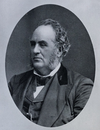 James Black (Pennsylvania) |
 John Russell (Michigan) |
5,607 | 0.1 |
| 1876 | 2nd | Halle's Hall, Cleveland, Ohio |
May 17, 1876 | 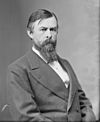 Green Clay Smith (Kentucky) |
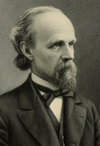 Gideon T. Stewart (Ohio) |
6,945 | 0.08 |
| 1880 | 3rd | June 17, 1880 |  Neal Dow (Maine) |
 Henry Adams Thompson (Ohio) |
10,364 | 0.11 | |
| 1884 | 4th | Lafayette Hall, Pittsburgh, Pennsylvania |
July 23–24, 1884 | 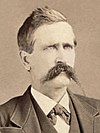 John P. St. John (Kansas) |
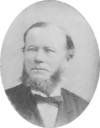 William Daniel (Maryland) |
147,482 | 1.50 |
| 1888 | 5th | Tomlinson Hall, Indianapolis, Indiana |
May 30–31, 1888 |  Clinton B. Fisk (New Jersey) |
 John A. Brooks (Missouri) |
249,819 | 2.20 |
| 1892 | 6th | Music Hall, Cincinnati, Ohio |
June 29–30, 1892 |  John Bidwell (California) |
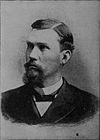 James B. Cranfill (Texas) |
270,879 | 2.24 |
| 1896 | 7th | Exposition Hall, Pittsburgh | May 27–28, 1896 | 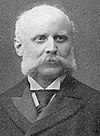 Joshua Levering (Maryland) |
 Hale Johnson (Illinois) |
131,312 | 0.94 |
| [7th] | Pittsburgh | May 28, 1896 | 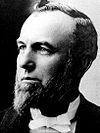 Charles Eugene Bentley (Nebraska) |
 James H. Southgate (N. Car.) |
13,968 | 0.10 | |
| 1900 | 8th | First Regiment Armory, Chicago, Illinois |
June 27–28, 1900 |  John G. Woolley (Illinois) |
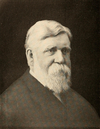 Henry B. Metcalf (Rhode Island) |
210,864 | 1.51 |
| [8th] | Seth H. Ellis (Ohio) | Samuel Nicholson | 5,696 | 0.04 | |||
| 1904 | 9th | Tomlinson Hall, Indianapolis | June 29 to July 1, 1904 |
 Silas C. Swallow (Pennsylvania) |
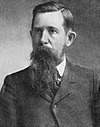 George W. Carroll (Texas) |
259,102 | 1.92 |
| 1908 | 10th | Memorial Hall, Columbus | July 15–16, 1908 | 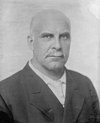 Eugene W. Chafin (Illinois) |
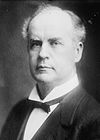 Aaron S. Watkins (Ohio) |
254,087 | 1.71 |
| 1912 | 11th | on a large temporary pier, Atlantic City, New Jersey |
July 10–12, 1912 | 208,156 | 1.38 | ||
| 1916 | 12th | St. Paul, Minnesota | July 19–21, 1916 |  J. Frank Hanly (Indiana) |
 Rev. Dr. Ira Landrith (Tennessee) |
221,302 | 1.19 |
| 1920 | 13th | Lincoln, Nebraska | July 21–22, 1920 |  Aaron S. Watkins (Ohio) |
 D. Leigh Colvin (New York) |
188,787 | 0.71 |
| 1924 | 14th | Memorial Hall, Columbus | June 4–6, 1924 | 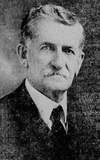 Herman P. Faris (Missouri) |
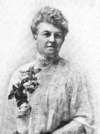 Marie C. Brehm (California) |
55,951 | 0.19 |
| 1928 | 15th | Hotel LaSalle, Chicago | July 10–12, 1928 |  William F. Varney (New York) |
 James A. Edgerton |
20,101 | 0.05 |
| [15th] | (California ticket) | 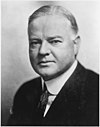 Herbert Hoover (California) |
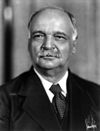 Charles Curtis (Kansas) |
14,394 | |||
| 1932 | 16th | Cadle Tabernacle, Indianapolis |
July 5–7, 1932 |  William D. Upshaw (Georgia) |
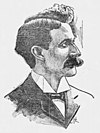 Frank S. Regan (Illinois) |
81,905 | 0.21 |
| 1936 | 17th | State Armory Building, Niagara Falls, New York |
May 5–7, 1936 |  D. Leigh Colvin (New York) |
Alvin York (Tennessee) (declined); Claude A. Watson (California) |
37,659 | 0.08 |
| 1940 | 18th | Chicago | May 8–10, 1940 | 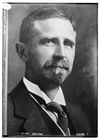 Roger W. Babson (Mass.) |
Edgar V. Moorman (Illinois) | 57,925 | 0.12 |
| 1944 | 19th | Indianapolis | Nov. 10–12, 1943 | Claude A. Watson (California) | Floyd C. Carrier (Maryland) (withdrew); Andrew N. Johnson (Kentucky) |
74,758 | 0.16 |
| 1948 | 20th | Winona Lake, Indiana | June 26–28, 1947 | Dale H. Learn (Pennsylvania) | 103,708 | 0.21 | |
| 1952 | 21st | Indianapolis | Nov. 13–15, 1951 |  Stuart Hamblen (California) |
Enoch A. Holtwick (Illinois) | 73,412 | 0.12 |
| 1956 | 22nd | Camp Mack, Milford, Indiana |
Sept. 4–6, 1955 | Enoch A. Holtwick (Illinois) |  Herbert C. Holdridge (California) (withdrew); Edwin M. Cooper (California) |
41,937 | 0.07 |
| 1960 | 23rd | Westminster Hotel, Winona Lake |
Sept. 1–3, 1959 | Rutherford Decker (Missouri) | E. Harold Munn (Michigan) | 46,203 | 0.07 |
| 1964 | 24th | Pick Congress Hotel, Chicago |
August 26–27, 1963 | E. Harold Munn (Michigan) | Mark R. Shaw (Massachusetts) | 23,267 | 0.03 |
| 1968 | 25th | YWCA, Detroit, Mich. | June 28–29, 1968 | Rolland E. Fisher (Kansas) | 15,123 | 0.02 | |
| 1972 | 26th | Nazarene Church Building, Wichita, Kansas |
June 24–25, 1971 | Marshall E. Uncapher (Kansas) | 13,497 | 0.02 | |
| 1976 | 27th | Beth Eden Baptist Church Bldg, Wheat Ridge, Colo. | June 26–27, 1975 | Benjamin C. Bubar (Maine) | Earl F. Dodge (Colorado) | 15,932 | 0.02 |
| 1980 | 28th | Motel Birmingham, Birmingham, Alabama |
June 20–21, 1979 | 7,206 | 0.01 | ||
| 1984 | 29th | Mandan, North Dakota | June 22–24, 1983 | Earl Dodge (Colorado) | Warren C. Martin (Kansas) | 4,243 | 0.00 |
| 1988 | 30th | Heritage House, Springfield, Illinois |
June 25–26, 1987 | George Ormsby (Pennsylvania) | 8,002 | 0.01 | |
| 1992 | 31st | Minneapolis, Minnesota | June 24–26, 1991 | 961 | 0.00 | ||
| 1996 | 32nd | Denver, Colorado | 1995 | Rachel Bubar Kelly (Maine) | 1,298 | 0.00 | |
| 2000 | 33rd | Bird-in-Hand, Pennsylvania | June 28–30, 1999 | W. Dean Watkins (Arizona) | 208 | 0.00 | |
| 2004 | 34th | Fairfield Glade, Tennessee | February 1, 2004 |  Gene Amondson (Washington) |
Leroy Pletten (Michigan) | 1,944 | 0.00 |
| [34th] | Lakewood, Colorado | August 2003 | Earl Dodge (Colorado) | Howard Lydick (Texas) | 140 | 0.00 | |
| 2008 | 35th | Adam's Mark Hotel, Indianapolis |
Sept. 13–14, 2007 |  Gene Amondson (Washington) |
Leroy Pletten (Michigan) | 655 | 0.00 |
| 2012 | 36th | Holiday Inn Express, Cullman, Alabama |
June 20–22, 2011 |  Jack Fellure (West Virginia) |
Toby Davis (Mississippi) | 518 | 0.00 |
| 2016 | 37th | Conference call[52][53] | July 31, 2015 |  James Hedges (Pennsylvania) |
Bill Bayes (Mississippi) | 5,617[54] | 0.00 |
| 2020 | 38th | Conference call[55] | August 24, 2019 | Phil Collins (Nevada) | Billy Joe Parker (Georgia) | 4,834[56] | 0.00 |
| 2024 | 39th | Buffalo, New York[57] | May 10, 2023 | Michael Wood (California) | John Pietrowski (Ohio) | 1,144[58] | 0.00 |
House
[edit]| Year | Number of candidates | Votes | Change |
|---|---|---|---|
| 1938 | 26 | 8,499 (0.02%) | |
| 1940 | 48 | 62,504 (0.13%) | |
| 1942 | 27 | 25,413 (0.09%) | |
| 1944 | 50 | 35,782 (0.08%) | |
| 1946 | 43 | 47,792 (0.14%) | |
| 1948 | 42 | 32,648 (0.07%) | |
| 1950 | 42 | 34,761 (0.09%) | |
| 1952 | 49 | 38,664 (0.07%) | |
| 1954 | 17 | 8,591 (0.02%) | |
| 1956 | 20 | 12,298 (0.02%) | |
| 1958 | 22 | 8,816 (0.02%) | |
| 1960 | 24 | 4,841 (0.01%) | |
| 1962 | 3 | 17,171 (0.03%) | |
| 1964 | 1 | 2,238 (0.00%) | |
| 1966 | 0 | 0 (0.00%) | |
| 1968 | 1 | 351 (0.00%) | |
| 1972 | 7 | 10,902 (0.02%) | |
| 1974 | 5 | 8,387 (0.02%) | |
| 1976 | 3 | 3,141 (0.00%) | |
| 1978 | 1 | 9,992 (0.02%) | |
| 1980 | 5 | 7,992 (0.01%) | |
| 1982 | 1 | 1,724 (0.00%) | |
| 1984 | 1 | 5,942 (0.01%) |
Notable members
[edit]
- Joseph E. Anderson (1873−1937), Illinois state legislator and most recent Prohibition Party member of the Illinois General Assembly.[59]
- Frances Estill Beauchamp (1860–1923), Kentucky state chair; secretary, national committee
- Marie C. Brehm, first legally qualified woman ever to be nominated for vice president[60]
- Benjamin Bubar Jr., member of the Maine House of Representatives (1939–44)
- Sidney Johnston Catts, 22nd Governor of Florida (1917–21)
- Samuel Dickie, Chairman of the Prohibition Party (1887–99) and the 9th Mayor of Albion, Michigan (1896–97)
- Neal Dow, mayor of Portland, Maine (1851–52; 1855–56)
- Clay Freeman Gaumer, member of the Illinois House of Representatives from Vermilion County during the 35th General Assembly.[61]
- Saxe J. Froshaug, member of the Minnesota Senate (1911–15)
- John R. Golden, member of the Illinois House of Representatives from Ford County during the 45th General Assembly.[62]
- Harvey W. Hardy, mayor of Lincoln, Nebraska (1877–79)
- Frank Hanly, 26th Governor of Indiana (1905–09)
- James Hedges, Tax Assessor for Thompson Township, Pennsylvania (2002–07) and first elected Prohibitionist in the 21st century.
- Nicholas L. Johnson, member of the Illinois House of Representatives from Kane County during the 46th General Assembly.[63]
- James Lamont, member of the Illinois House of Representatives from Winnebago County during the 35th General Assembly.[64]
- John St. John, 8th Governor of Kansas (1879–83)
- Charles Hiram Randall, member of the California State Assembly (1911–12) and Representative from California's 9th congressional district (1915–21)
- Frank S. Regan (1862–1944), member of the Illinois House of Representatives from Winnebago County during the 41st General Assembly.[65]
- Susanna M. Salter, first female mayor in the United States (1887–88)[66]
- Daniel R. Sheen (1852–1926), member of the Illinois House of Representatives from Peoria County during the 44th General Assembly.[61]
- Green Clay Smith, Representative from Kentucky's 6th congressional district (1863–66) and 2nd Territorial Governor of Montana (1866–69)
- Emily Pitts Stevens, joined the Prohibition Party in 1882, and led the movement, in 1888, to induce the Woman's Christian Temperance Union to endorse that party.[67]
- Oliver W. Stewart, Chairman of the Prohibition Party (1900–05) and member of the Illinois House of Representatives (1903–05)
- Frances Willard, one of the founders of the Woman's Christian Temperance Union[68]
- Alonzo Wilson (1868–1949), member of the Illinois House of Representatives from DuPage County during the 44th General Assembly.[61]
- Josephus C. Vines, mayor of Brighton, Alabama (1905–06)
Platform
[edit]The Prohibition Party platform, as listed on the party's web site in 2024, includes the following points:[69]
Social issues
[edit]- Blue laws prohibiting employers in all fields except public safety from requiring employees to work on the Sabbath
- Support for voluntary prayer in public schools
- Opposition to attempts to remove religion from the public square
- Pro-choice[70]
- Opposition to capital punishment
- Opposition to physician-assisted suicide
- A Constitutional amendment to ban the government from issuing marriages, which shall be replaced by civil unions between any two adults
- Opposition to pornography
- Recognition of the contributions of immigrants to the United States
- Prohibition on gambling and abolition of all state lotteries
- Imposition of restrictions and increased taxation for all non-medicinal drugs, including alcohol and tobacco
- Campaigns to promote temperance
- A "strict interpretation" of the Second Amendment to the United States Constitution that includes a right to use arms for defense and sport
- Opposition to testing on animals
- Prohibition on use of animals in sport
Economic issues
[edit]- Abolition of the United States Federal Reserve and re-establishment of the Bank of the United States
- Strict laws against usury
- Right to work
- A fully funded Social Security system
- A Balanced Budget Amendment
- Increased spending on public works projects
- Opposition of government financial interference in, or aid to, commerce
- Free college education for all Americans
- Job training programs paid for by tariffs
Foreign policy issues
[edit]- A non-interventionist foreign policy
- Eliminating conscription in times of peace
- Opposition to military action that violates Just War principles
- Fair trade
- Use of human rights considerations in determining most favored nation status
- A generous policy of asylum for people facing persecution or living in inhumane conditions
Chairmen
[edit]In 1867, John Russell became the first chairman of the Prohibition party, with Earl Dodge serving the longest for twenty four years and Gregory Seltzer serving the shortest for one year.[71]
- 1867–1872: John Russell
- 1872–1876: Simeon B. Chase
- 1876–1880: James Black
- 1880–1884: Gideon T. Stewart
- 1884–1887: John B. Finch
- 1887–1899: Samuel Dickie
- 1900–1905: Oliver W. Stewart
- 1905–1908: Charles R. Jones
- 1908–1924: Virgil G. Hinshaw
- 1924–1925: B. E. P. Prugh
- 1925–1932: D. Leigh Colvin
- 1932–1947: Edward E. Blake
- 1947–1950: Virgil C. Finnell
- 1950–1953: Gerald Overholt
- 1953–1955: Lowell H. Coate
- 1955–1971: E. Harold Munn
- 1971–1979: Charles Wesley Ewing
- 1979–2003: Earl Dodge
- 2003–2005: Don Webb
- 2005–2009: Gene Amondson
- 2009–2013: Toby Davis
- 2013–2014: Gregory Seltzer
- 2014–2019: Rick Knox
- 2019–2020: Randy McNutt
- 2020–2023: Phil Collins
- 2023–Present: Zack Kusnir
See also
[edit]- 19th-century newspapers that supported the Prohibition Party
- Alcohol during and after prohibition
- Law Preservation Party (New York branch of the Prohibition Party)
- List of political parties in the United States
- Scottish Prohibition Party
- Robert P. Shuler
- Social conservatism
- Temperance organizations
References
[edit]Citations
[edit]- ^ a b Lopez, German (October 28, 2016). "There's a Prohibition Party candidate running for president in 2016". Vox. Retrieved October 25, 2018.
- ^ "Page 9 Partisan prophets; a history of the Prohibition Party, 1854-1972".
- ^ James Hedges (June 2020). "Prohibition Platform incorporates a Consistent Life Ethic". National Prohibitionist. 10 (2). Mercersburg Printing: 4. ISSN 1549-9251.
- ^ "Page Five of Brief history of prohibition and of the prohibition reform party". p. 5. Archived from the original on March 18, 2020.
- ^ "Hon. James Black Dead". Lancaster Intelligencer. December 20, 1893. p. 3. Archived from the original on December 15, 2019 – via Newspapers.com.
- ^ "Give the Ladies a Chance: Gender and Partisanship in the Prohibition Party, 1869–1912". Journal of Women's History 2: 137
- ^ Gillespie, J. David. Challengers to Duopoly: Why Third Parties Matter in the American Two-Party System. 2012. p. 47
- ^ "Page Six of Brief history of prohibition and of the prohibition reform party". p. 6. Archived from the original on March 18, 2020.
- ^ "Page Nine of Brief history of prohibition and of the prohibition reform party". p. 9. Archived from the original on March 18, 2020.
- ^ "Page Eighteen of Brief history of prohibition and of the prohibition reform party". p. 18. Archived from the original on March 18, 2020.
- ^ "Page Twenty Three of Brief history of prohibition and of the prohibition reform party". p. 23. Archived from the original on March 18, 2020.
- ^ "Page Twenty Four of Brief history of prohibition and of the prohibition reform party". p. 24. Archived from the original on March 18, 2020.
- ^ "Page Twenty Five of Brief history of prohibition and of the prohibition reform party". p. 25. Archived from the original on March 18, 2020.
- ^ James Black. "Brief history of prohibition and of the prohibition reform party". Library of Congress.
- ^ Cherrington, Ernest Hurst (1920). The Evolution of Prohibition in the United States of America. American issue Press. p. 166. ISBN 9780722227930 – via Google Books.
- ^ Bliss, William Dwight Porter (1897). "The Encyclopedia of Social Reform". Funk & Wagnalls. p. 1118 – via Google Books.
- ^ Wayne, Tiffany K. (2014). Women's Rights in the United States: A Comprehensive Encyclopedia of Issues, Events, and People. ABC-CLIO. p. 254. ISBN 9781610692151 – via Google Books.
- ^ Cherrington, Ernest Hurst (1920). The Evolution of Prohibition in the United States of America. American issue Press. p. 172. ISBN 9780722227930 – via Google Books.
- ^ "John P. St. John Is Gone". The Garnett Review. September 7, 1916. p. 2. Archived from the original on December 16, 2019 – via Newspapers.com.
- ^ "The Prohibition Candidate". The Times. June 3, 1888. p. 4. Archived from the original on December 20, 2019 – via Newspapers.com.
- ^ Wayne, Tiffany K. (2014). Women's Rights in the United States: A Comprehensive Encyclopedia of Issues, Events, and People. ABC-CLIO. p. 255. ISBN 9781610692151 – via Google Books.
- ^ Rumbarger, John J. (1989). Profits, Power, and Prohibition. ABC-CLIO. p. 85. ISBN 9780887067822 – via Google Books.
- ^ "St. John Bolts". The Topeka State Journal. May 29, 1896. p. 1. Archived from the original on December 18, 2019 – via Newspapers.com.
- ^ "Gov. John Pierce St. John".
- ^ "To Adopt S. J. Res. 1, (43 STAT-1, April 16, … – House Vote #10 – Apr 5, 1917".
- ^ Richardson, Darcy (2008). Page 69 Others: Fighting Bob La Follette and the Progressive Movement: Third-party Politics in the 1920s. iUniverse. p. 69. ISBN 9780595481262 – via Google Books.
- ^ "May Select William J. Bryan". The Johnson City Comet. May 25, 1916. p. 1. Archived from the original on March 19, 2020 – via Newspapers.com.
- ^ "Hanly And Landrith". The Journal and Tribune. July 22, 1916. p. 1. Archived from the original on March 12, 2020. Retrieved March 19, 2020 – via Newspapers.com.
- ^ "Prohibitionists Refuse To Fuse". The Capital Journal. July 17, 1916. p. 2. Archived from the original on March 12, 2020. Retrieved March 19, 2020 – via Newspapers.com.
- ^ "In California Votes For Merger With Nationalists". The Marlow Review. February 5, 1918. p. 11. Archived from the original on March 22, 2020 – via Newspapers.com.
- ^ "Guide to the Microfilm Edition of Temperance and Prohibition Papers". University of Michigan. 1977. p. 48 – via Google Books.
- ^ Richardson, Darcy (2008). Page 324 Others: Fighting Bob La Follette and the Progressive Movement: Third-party Politics in the 1920s. iUniverse. p. 324. ISBN 9780595481262 – via Google Books.
- ^ "Prohis Select William Varney". Statesman Journal. July 13, 1928. p. 1. Archived from the original on December 17, 2019 – via Newspapers.com.
- ^ "National Affairs: Men of Principle". Time. September 10, 1928. Archived from the original on November 21, 2010. Retrieved May 22, 2010.
- ^ "National Affairs: In Cadle Tabernacle". Time. July 18, 1932. Archived from the original on October 27, 2010. Retrieved May 22, 2010.
- ^ "Page 57 Partisan prophets; a history of the Prohibition Party, 1854–1972".
- ^ "Americana: Time to Toast the Party?". Time. November 7, 1977. Archived from the original on October 22, 2010. Retrieved May 22, 2010.
- ^ Pitkin, Ryan (October 13, 2004). "Beyond Bush, Kerry & Nader". Creative Loafing Charlotte. Archived from the original on June 16, 2011. Retrieved January 30, 2016.
- ^ The National Prohibitionist, 6/2003, p. 1
- ^ Official Publication of the Abstract of Votes Cast for the 2003 Coordinated, 2004 Primary, and 2004 General (PDF). Colorado Secretary of State. 2004. pp. 88–89. Retrieved April 28, 2024.
- ^ The National Prohibitionist, 11/2004, p. 1.
- ^ "Internal Prohibition Party Battle Has Court Hearing on January 16". Ballot Access News. January 15, 2007. Archived from the original on February 2, 2016. Retrieved January 30, 2016.
- ^ "Ballot Access News – March 1, 2006". Archived from the original on September 23, 2015. Retrieved January 30, 2016.
- ^ "Prohibition Party Now to Receive Full Pennock Trust Income". October 19, 2014. Archived from the original on February 23, 2017. Retrieved July 12, 2017.
- ^ "A sobering alternative? Prohibition party back on the ticket this election" Archived 2016-10-07 at the Wayback Machine, The Guardian, May 11, 2016.
- ^ "Prohibition Party Rejoins Board of Coalition for Free & Open Elections". October 25, 2015. Archived from the original on December 21, 2019.
- ^ "Prohibition Party Now a Qualified Party in Mississippi". December 11, 2015. Archived from the original on April 5, 2016.
- ^ "Prohibition Party Nominates National Ticket for 2020 | Ballot Access News". November 14, 2018.
- ^ Gunzburger, Ron. "Politics1 – Director of U.S. Political Parties". politics1.com.
- ^ Makeley, Jonathan (April 15, 2019). "Prohibition National Committee Meets, Gammon and Collins Selected as Presidential Ticket". Independent Political Report. Retrieved April 27, 2019.
- ^ Makeley, Jonathan (August 24, 2019). "Prohibition Party Nominates New Ticket, Selects New Chairman".
- ^ Winger, Richard (May 7, 2015). "Prohibition Party Cancels Presidential Convention and Instead will Nominate by Direct Vote of Members". Ballot Access News. Archived from the original on June 8, 2015. Retrieved June 8, 2015.
- ^ "Prohibition Party Nominates National Ticket". Ballot Access News. July 31, 2015. Archived from the original on August 3, 2015. Retrieved August 3, 2015.
- ^ "2016 Election Results: President Live Map by State, Real-Time Voting Updates". Election Hub. November 8, 2016. Archived from the original on June 28, 2017. Retrieved July 12, 2017.
- ^ "Prohibition Party Nominates New Ticket, Selects New Chairman". August 24, 2019. Retrieved October 26, 2019.
- ^ "United States Elections Results: President - General". Associated Press. Retrieved November 30, 2020.
- ^ "Prohibition Party Chooses National 2024 Ticket | Ballot Access News". Ballot Access News. May 10, 2023.
- ^ "United States Elections Results: President - General". Associated Press. Retrieved November 15, 2024.
- ^ "Jos. E. Anderson, Ex-Legislator, Dies in Hospital". Chicago Tribune. March 23, 1937. p. 23. Retrieved August 23, 2022.
- ^ "Prohibitionists Historical Vote Record". Prohibitionists.org. Archived from the original on March 3, 2016. Retrieved January 30, 2016.
- ^ a b c Illinois Blue Book 1913–14, p. 408
- ^ Illinois Blue Book 1913–1914. p. 410.
- ^ Illinois Blue Book 1913–1914. p. 411.
- ^ Illinois Blue Book 1913–1914. p. 390. Retrieved February 10, 2023.
- ^ Illinois Blue Book 1913–1914. p. 402.
- ^ "Susanna Madora Salter –Kansapedia". KSHS. April 2010. Archived from the original on March 4, 2016. Retrieved January 30, 2016.
- ^ Willard, Frances Elizabeth; Livermore, Mary Ashton Rice (1893). A Woman of the Century: Fourteen Hundred-seventy Biographical Sketches Accompanied by Portraits of Leading American Women in All Walks of Life (Public domain ed.). Moulton. pp. 686–.
- ^ "Frances E. Willard". National Women's Hall of Fame. Retrieved on November 18, 2014.
- ^ "Platform". Prohibition Party. Retrieved February 7, 2019.
- ^ "Platform". Prohibition Party. Retrieved February 7, 2024.
Sanctity of Life ... We believe that each woman should have the right to decide based on her own conscience.
- ^ "Outline of History". prohibitionists.org. Archived from the original on March 11, 2024.
Primary sources
[edit]- Black, James (1876). Is There a Necessity for a Prohibition Party?. New York: The National Temperance Society and Publication House. OCLC 894214158. Retrieved January 30, 2016.
Further reading
[edit]- Andersen, Lisa (2012). "From Unpopular to Excluded: Prohibitionists and the Ascendancy of a Democratic-Republican System, 1888–1912". Journal of Policy History. 24 (2): 288–318. doi:10.1017/S089803061200005X.
- Cherrington, Ernest Hurst, ed. (1930). Standard encyclopedia of the alcohol problem. Vol. 1–5. Westerville, OH: American Issue Pub. Co. OCLC 241280199.
- Colvin, David Leigh (1926). Prohibition in the United States: a History of the Prohibition Party, and of the Prohibition Movement.
- McGirr, Lisa (2016). The War on Alcohol: Prohibition and the Rise of the American State. National Geographic Books. ISBN 9780393066951. OCLC 902661500.
- Pegram, Thomas R. (1998). Battling demon rum: The struggle for a dry America, 1800–1933. Chicago: Ivan R. Dee. ISBN 9781566632096. OCLC 42790675.
External links
[edit]- Official website

- Prohibition Partisan Historical Society (Official Website)
- Prohibition Party on Facebook
- Prohibition Party on Twitter
- Partisan prophets; a history of the Prohibition Party, 1854–1972, Roger C. Storms
- Prohibition Party History, Michael Wood
- Prohibition Party
- 1869 establishments in the United States
- Christian democratic parties in the United States
- Conservative parties in the United States
- Political parties established in 1869
- Political parties in the United States
- Prohibition in the United States
- Prohibition parties
- Single-issue political parties
- Social conservative parties
- Temperance organizations in the United States


